Over recent years, Policy Lab has experimented by creating physical spaces for policymakers and citizens to experience information and design solutions to policy problems. This blog starts by exploring why such interactive and sensorially stimulating environments might be important in policymaking, with reference to examples from before we needed to social distance to prevent the spread of COVID-19. We consider how we can adapt this practice during a period of social distancing, looking at case studies from inside and outside of government. We then reflect on innovations from the lockdown to improve our future practice, including when we can once again reconvene in physical spaces. We conclude by asking: what changes have you made during this period that you would like to continue with?
Before: spaces to collectively see, touch, move, think
Over recent years Policy Lab has combined our skills in co-design, participatory art, policy and ethnography to deliver experimental interactive approaches to policymaking. In 2019 we worked with the Department for Transport to improve the use of guidance for street design. Poorly designed streets can lead to bland, disconnected and dangerous places.
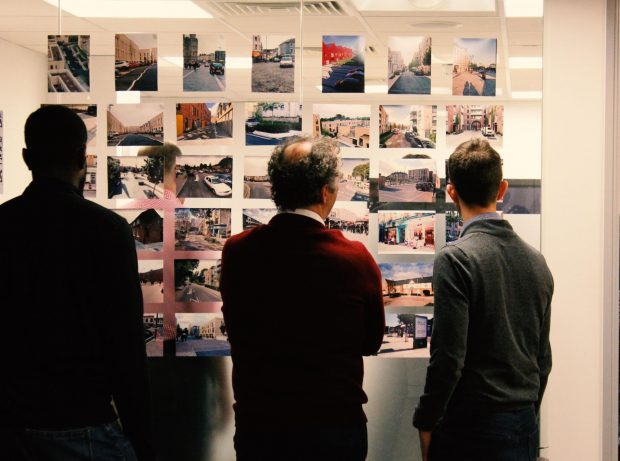
An important tool for street designers is the Manual for Streets. This guidance is not mandatory, and anecdotal evidence tells us that uptake is patchy. We brought together the intended users of the Manual for Streets - street designers, planners, developers, council officials, highways authorities, elected local officials, or consultants - for an event at the Chartered Institute of Highways and Transportation (CIHT).
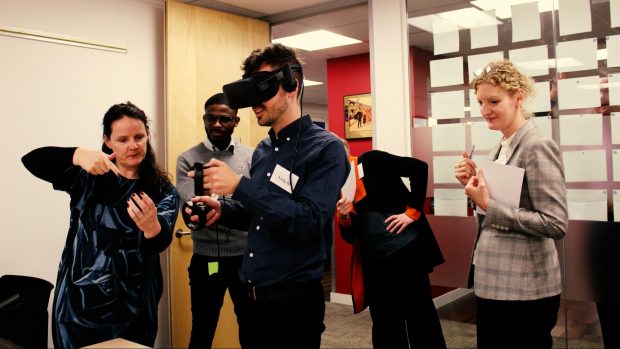
At the event we created ‘experience stations’ for attendees to engage with information relating to street design in different sensory formats. This included a wall of crowd-sourced photos showing well and poorly designed streets, a virtual reality (VR) station to discover international cities, and tactile woodcuts inspired by braille maps for attendees to explore places including Sherford, Nottingham and Ballater using their hands (see images).
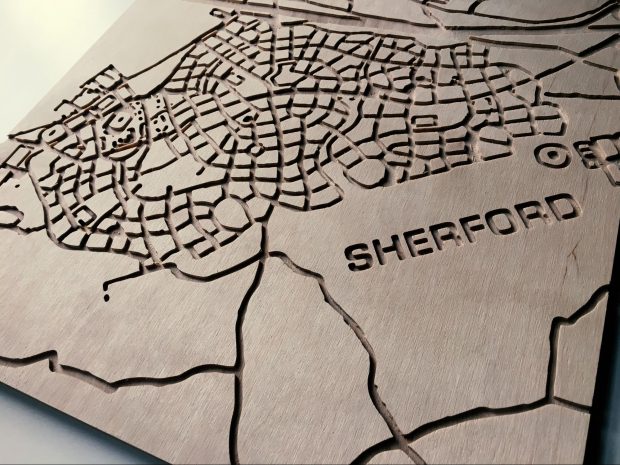
Why use diverse formats to provide and elicit information?
Since the 1970s experts such as David Kolb and Neil Fleming have argued that individuals acquire knowledge in different ways. While some people prefer reading and writing, others prefer experiential learning styles which include visual, auditory and kinaesthetic ways to engage with information.
More recently thinkers from the museum studies field have made the case for artefacts to be available for researchers and citizens to handle and feel. This is important because neuroscientists have found that we think differently about information when we can touch things.
Matthew Syed argues for the importance of diverse thinking for organisations to deal with increasingly complex challenges. In Policy Lab, we have learnt that it is important to diversify the means by which information can be considered, in order to get diverse perspectives from a broader audience.
During: virtual evidence discoveries, home theatre, remote ethnography
The COVID-19 lockdown restrictions means that some of these practices might feel unavailable. Creative practitioners thrive when faced with a challenge. I was lucky to recently be part of an online trends and futures workshop run by Policy Lab’s Design and Innovation Lead Sanjan Sabherwal. Sanjan spliced some of Policy Lab’s interactive methods with digital tools to create our first virtual evidence discovery using Trello.

Sanjan and Policy Lab’s speculative designer, Nina Cutler, then used Google Jamboards to empower participants to build their own future scenarios, with a specially made collage board allowing participants to quickly and powerfully visualise possible future worlds.
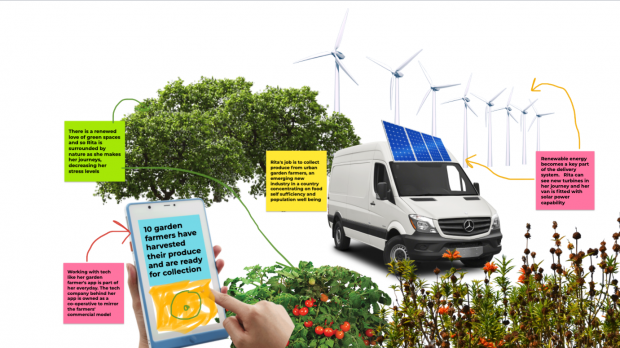
Nina and Sanjan bring their experience from design, fashion and material art to help create dynamic and participatory policy.
I have previously argued that policymaking can incorporate ideas and practice from art and culture. I never imagined that a national lockdown would add such relevance.
The Brighton People’s Theatre, run by my fellow Clore Leadership scheme participant Naomi Alexander, is running twice-weekly home theatre workshops. This includes asking 200 people to make their homes the stage. This includes sound, lighting and costume workshops to recreate theatrical techniques at home, and a set of highly kinaesthetic and multisensory activities, all via videoconferencing.
At Policy Lab, we continue to ask how we can translate such techniques into policymaking to ensure we continue to engage citizens, experts and policymakers in diverse and highly participatory ways during social isolation. Another early example is our ethnographic research, which we are running remotely through interactive online formats including video blogging and online diaries.
Future: better integrated analogue and digital platforms?
In the midst of another online workshop, Head of Policy Lab Vasant Chari, exclaimed ‘we will never do another workshop without a live document again!’ It certainly makes the workshop process more efficient. In truth, this difficult time is giving us the shot-in-the arm to innovate our interactive activities.
Getting the balance between analogue and digital formats seems critical to this. A relevant recent example, which we will write more about soon, is the system mapping project we ran in 2019 with UCL and the Department for Business, Energy and Industrial Strategy (BEIS) on the decarbonising buildings and industry. In workshops for the project, we used both large scale analogue, physical systems maps alongside a dynamically responsive set of digital maps built on the Kumu platform (see images).
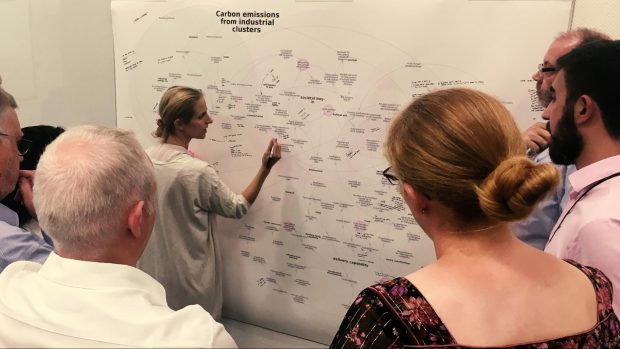
The large printed maps allowed a range of people to simultaneously see the problem, identify critical factors and vicious circles, and possible solutions. People loved drawing on the maps and collectively creating meaning - but the digital platform was better in allowing people to see how proposed changes would impact the wider system, in real time, and for each sector.
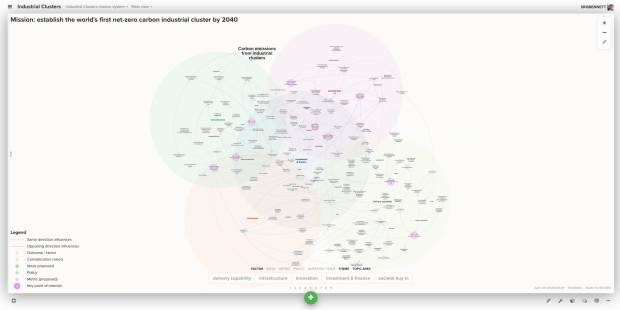
We would love to see and hear (and touch, smell and taste) how you have been innovating in organising your interactive work. Can you make events genuinely participatory, accessible and inclusive? How many senses can you activate at once? And what does this mean for insights and learnings for policy and decision-making?
1 comment
Comment by alain ruche posted on
The simple fact of looking at things from another angle, actually the angle of complexity, triggers fresh insights which nurture new courses of action.
Instead of working with data on emigration, I displayed 20 posters on the wall with the pictures by photographer Shannon Jensen under her title; 'How shoes can tell the plight of refugees in South Sudan'. I invited the participants in queuing and reviewing the posters, and go back to their seat. Then they spontaneously clapped their hand out of emotion, empowerment and readyness to do something different. I also practiced with other cases.